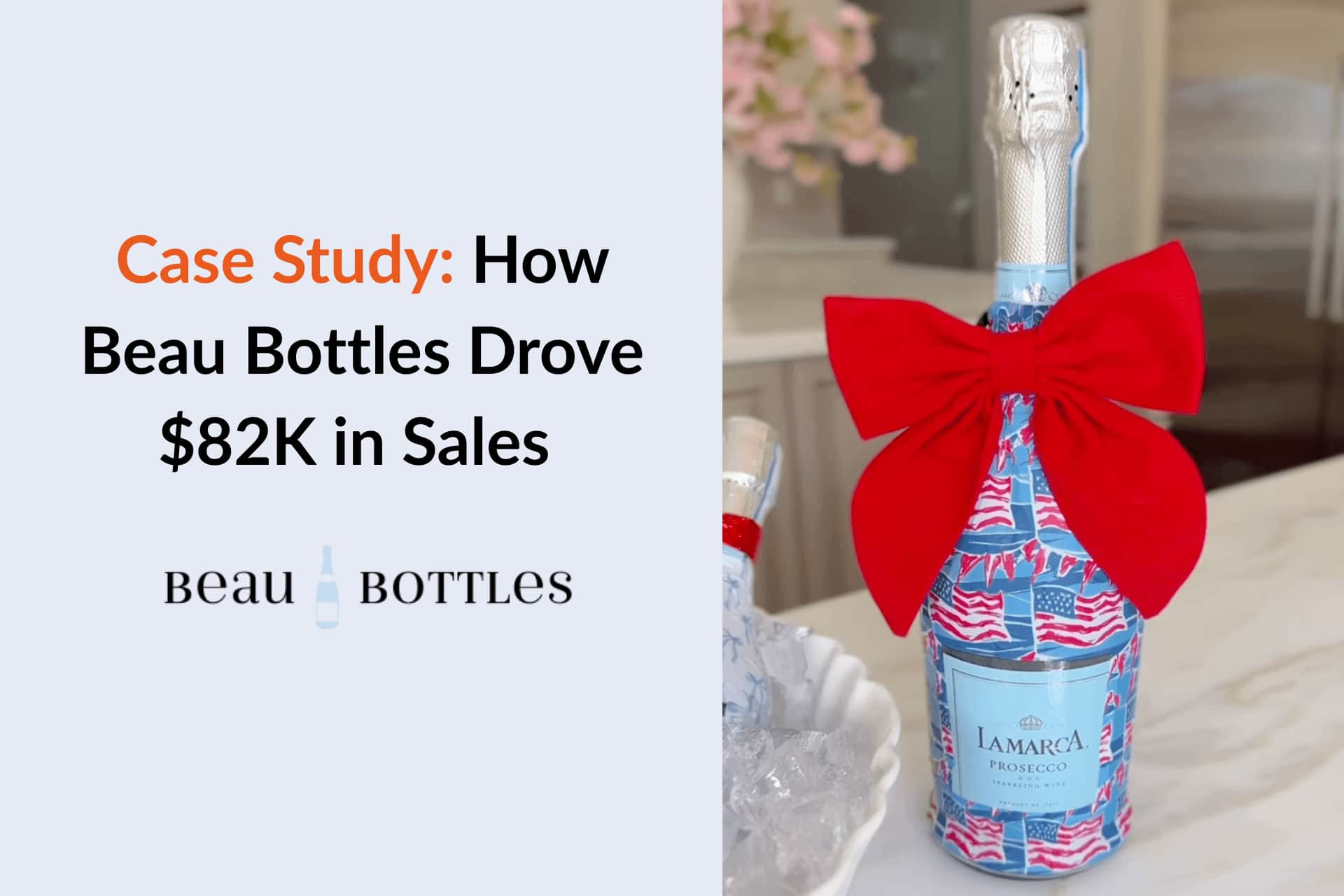





Finding the right influencer marketing software has become a priority for brands that want to scale campaigns with efficiency and transparency. While Influencer Searcher offers basic tools for creator discovery, many users report key drawbacks such as limited campaign management features or outdated search filters. These issues push marketers and D2C business owners to explore more advanced alternatives that provide robust analytics, streamlined outreach, and better return on investment.
As more businesses invest in creator partnerships, choosing the right software can determine how effectively they connect with audiences and measure ROI. In this article, we’ll explore the top 10 Influencer Searcher alternatives and compare their features, pricing, and reviews to help you make the right decision:
Let’s discover four reasons why some users might be seeking Influencer Searcher alternatives:
Marketers often mention that Influencer Searcher is useful only for finding creators, but it lacks deeper tools for end-to-end campaign execution. Without integrated campaign tracking, CRM, or reporting, brands are forced to use multiple external tools.
On forums like Reddit, users have raised concerns that Influencer Searcher’s filtering options are too basic compared to other platforms. Missing advanced filters, such as audience authenticity checks, engagement quality, and cross-platform analytics, make it harder for brands to identify influencers who align with their goals.
Unlike competitors such as Upfluence or Traackr that have dozens of verified reviews on G2 and Capterra, Influencer Searcher has little to no presence on major review platforms. This absence of third-party validation makes it difficult for businesses to assess reliability and trustworthiness.
Several users reported long response times and limited onboarding help, which can be a major obstacle for brands trying to get campaigns live quickly. Without responsive support, smaller teams especially struggle to troubleshoot or scale campaigns effectively.
Our comparison focuses on several key aspects:
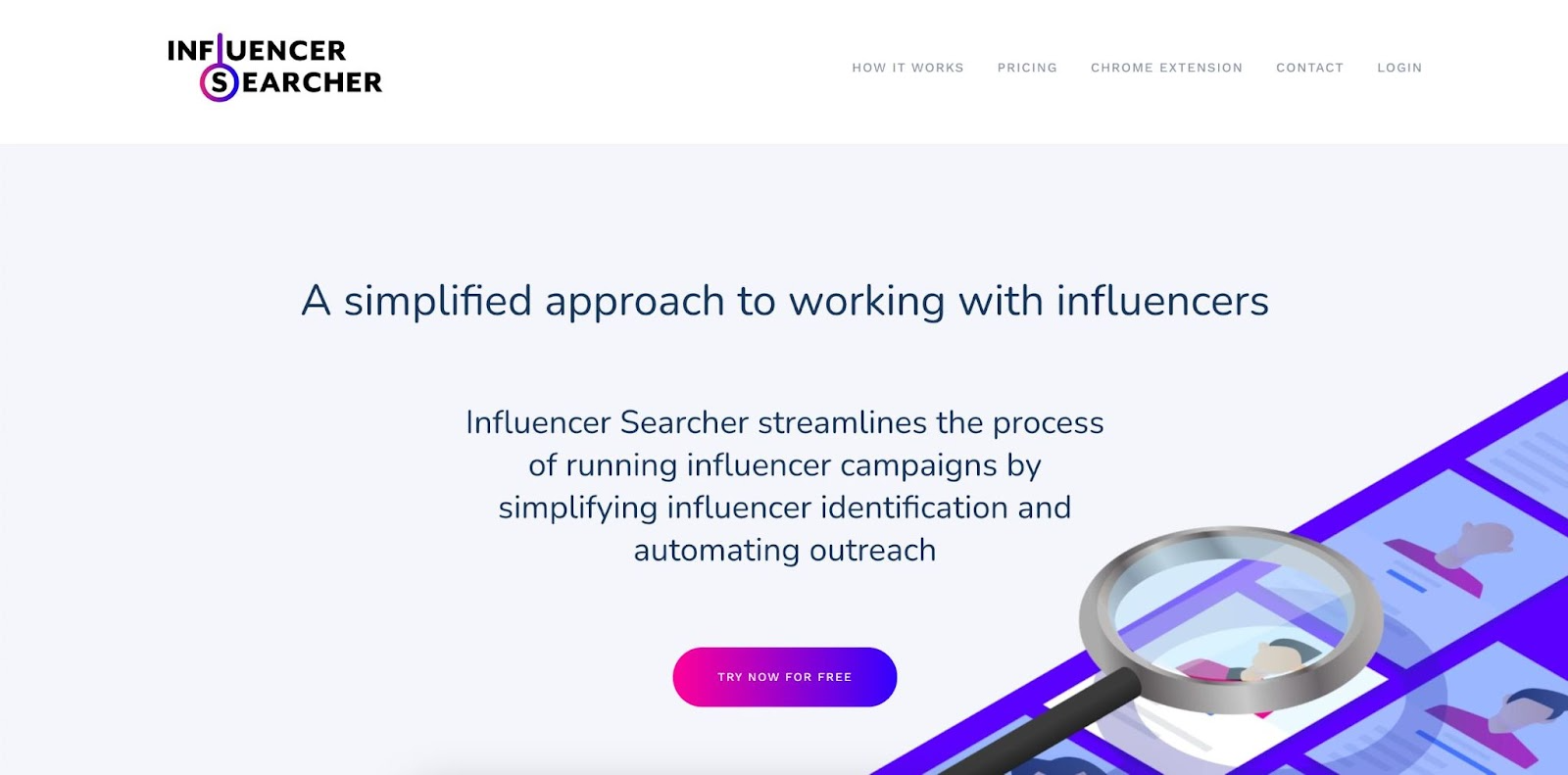
Platform Coverage: Primarily supports Instagram.
Best For: Small to medium-sized e-commerce or DTC brands that want to quickly discover Instagram and micro-influencer talent, organize them into groups for campaigns, and send outreach without needing full enterprise-level campaign workflows.
Pricing: All monthly plans offer a 14-day free trial.
Reviews: Not found trustworthy reviews.
Ease of Use (UX/UI): Users say the interface is reasonably simple: search filters are easy to pick up, grouping and outreach flows are intuitive, especially for small-team use. However, some users report that filtering doesn’t always apply exactly as expected, so refining search results can take some trial & error.
Customer Support: Some users say onboarding was smooth and responsive, others say response times are slow once over the initial phase. There are reports that for higher-volume or more advanced issues, support and feature requests are less fast or less prioritized.

Platform Coverage: Instagram, TikTok, YouTube, Facebook, Pinterest, Snapchat, X, Twitch
Best For: D2C and eCommerce brands that want an all-in-one platform to manage influencer discovery, outreach, content, and ROI tracking. It’s ideal for teams that prioritize scalability, automation, and measurable campaign results.
Pricing: (Plans are monthly and scalable.)
Reviews: 5.0 / 5.0 (Capterra)
Ease of Use (UX/UI): Influencer Hero is known for its clean, intuitive interface with a streamlined dashboard, automated workflows, and customizable email templates. Features like drag-and-drop campaign setup and a Chrome extension save brands hours every week.
Customer Support: Influencer Hero delivers 24/7 real-human live chat, responsive email support, and an extensive Help Center with tutorials and guides. Every plan includes a dedicated account manager from day one, with optional strategy consultations. Pro plan users also gain access to a private Slack channel for faster, continuous support.
While Influencer Searcher is primarily focused on Instagram discovery and outreach at a lower entry price ($20–$300/month), it lacks robust support for other platforms, advanced analytics, or proven public reviews. In contrast, Influencer Hero offers multi-platform coverage, enterprise-grade CRM, ROI tracking, and integrated eCommerce tools, all features critical for scaling campaigns beyond simple outreach.
Another key difference is support: Influencer Hero provides dedicated account managers and 24/7 real-human support, while Influencer Searcher’s customer support is reported to be mixed and less responsive. For growing brands that need both scalability and reliability, Influencer Hero delivers a more complete and professional solution, making it the stronger choice for long-term influencer marketing success.
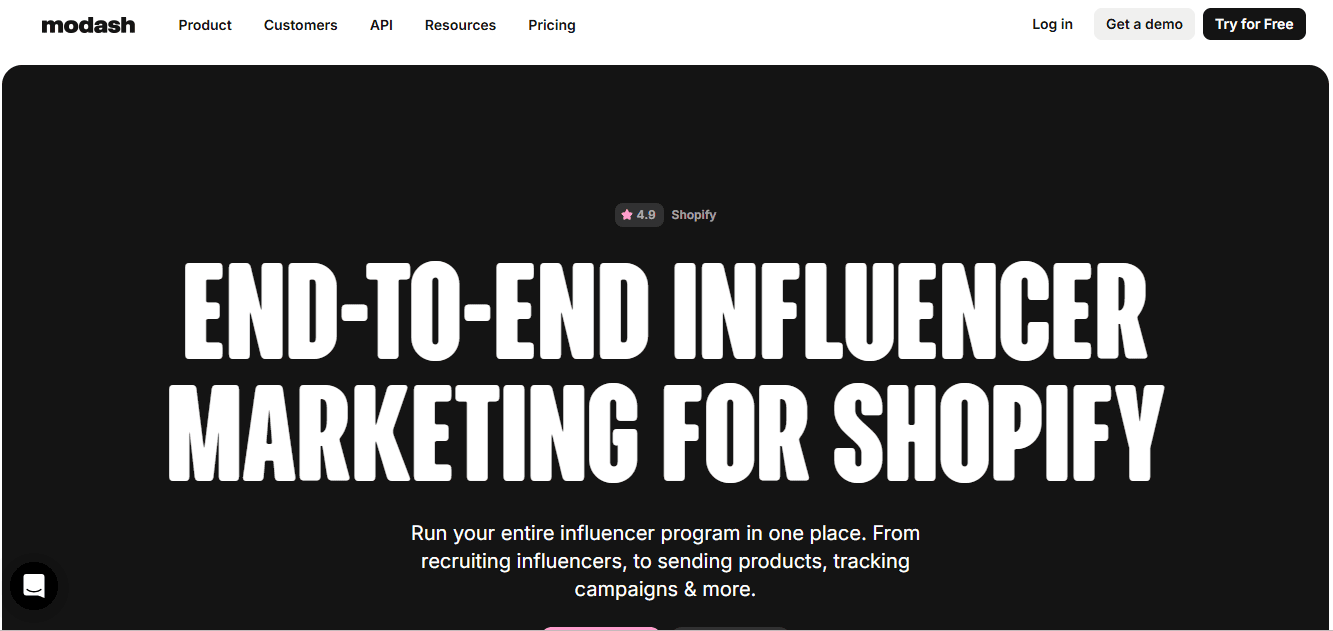
Platform Coverage: Instagram, TikTok, YouTube, and profile recognition for X, Snapchat, and other platforms.
Best For: Modash is best for eCommerce brands (especially Shopify-based) and growth-focused D2C teams that want to leverage a massive influencer database for discovery, outreach, affiliate programs, and automated gifting. It’s ideal for brands scaling quickly across multiple markets with a need for strong filtering and analytics.
Pricing: Modash offers free trials to both their Essentials and Performance plan.
Reviews: 4.9 / 5.0(Capterra.com)
Ease of Use (UX/UI): Users describe Modash as intuitive and easy to navigate, with strong filtering and quick search performance. The dashboard and campaign tracking are clean, though some users feel certain advanced features require a bit of onboarding.
Customer Support: Modash earns praise for responsive onboarding and customer service, with users noting fast replies and helpful guidance. Some feedback mentions that advanced support and feature requests can take longer depending on complexity.
Influencer Searcher focuses primarily on Instagram discovery and outreach at a low entry price (plans from $20 to $300/month), making it a cost-effective option for small brands testing influencer marketing. However, its platform coverage is limited, and it lacks advanced analytics, fraud detection, and robust public reviews.
Modash, in contrast, is a more advanced, multi-platform solution with a huge database (350M+ profiles) and stronger tools for filtering, analytics, affiliate automation, and Shopify integration. At $199–$499/month (annual billing), it’s significantly more expensive than Influencer Searcher but also far more comprehensive.
Brands that need affordable Instagram-focused discovery may lean toward Influencer Searcher, while those seeking scalability, advanced features, and Shopify automation will find Modash the stronger long-term choice.

Platform Coverage: Instagram, TikTok, YouTube, X , Twitch, Pinterest, WordPress blogs.
Best For: eCommerce and D2C brands, especially those selling on Shopify or Amazon, that want a full end-to-end solution for influencer discovery, campaign management, affiliate tracking, and payouts. It’s designed for teams that prioritize ROI measurement and scalable influencer programs.
Pricing: Upfluence offers annual contracts with the following pricing.
Reviews: 4.6 / 5.0 (G2)
Ease of Use (UX/UI): Users highlight that Upfluence has a clean interface with strong filtering options, though the initial setup and learning curve can feel overwhelming due to its advanced features. Once onboarded, navigation is intuitive and workflows are streamlined.
Discover how to level up your influencer strategy by comparing Upfluence alternatives that offer better flexibility and pricing.
Customer Support: Customer support is generally responsive and professional, with account managers offering onboarding and training. However, some users mention delays in resolving complex issues and limited flexibility with contracts.
Influencer Searcher and Upfluence serve very different market segments.
Influencer Searcher is built for smaller brands or teams who need affordable, straightforward influencer discovery and outreach, especially on Instagram. With entry plans starting as low as $20/month, it’s budget-friendly and allows unlimited search within tiers, making it attractive for startups and small eCommerce businesses. However, it lacks multi-platform depth, robust reporting, and eCommerce integrations.
Upfluence, on the other hand, is a premium all-in-one platform starting at $1,276/month, tailored for larger brands that need enterprise-grade campaign management, advanced analytics, and tight integration with Shopify and Amazon. Unlike Influencer Searcher, it provides ROI tracking, social listening, and direct influencer payouts.
While Influencer Searcher is the better option for lean budgets and quick influencer searches, Upfluence is the stronger choice for scaling global influencer programs and tracking revenue impact in detail.
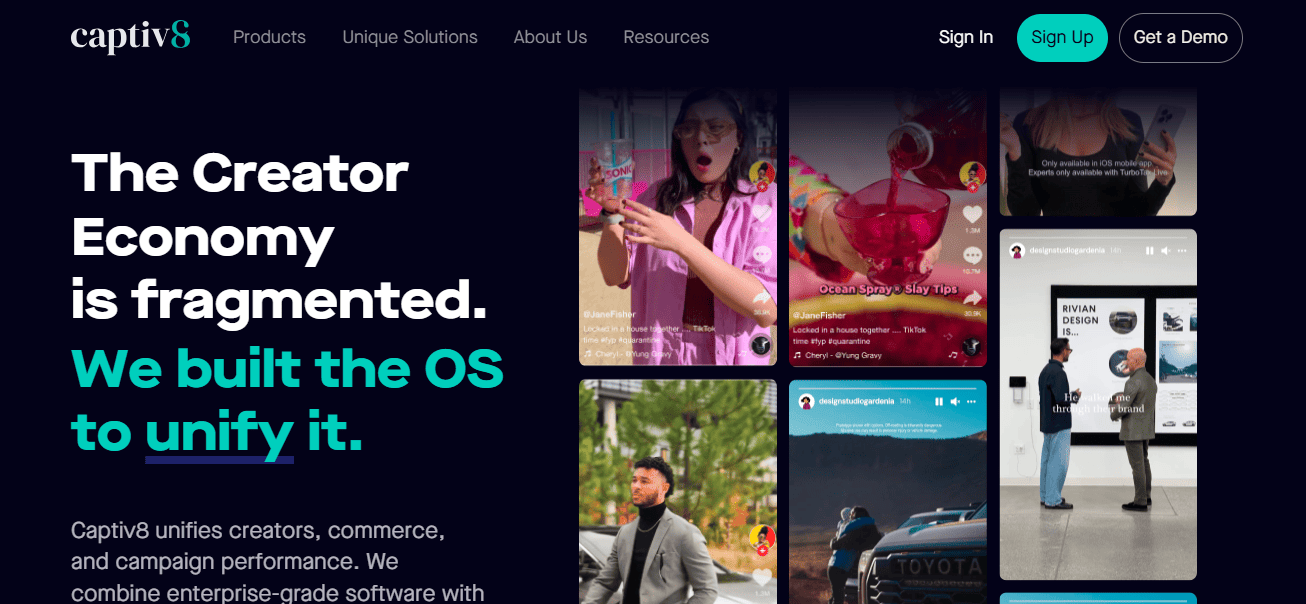
Platform Coverage: Captiv8 supports influencer campaigns across Instagram, YouTube, TikTok, Facebook, Twitter, and Pinterest.
Best For: Enterprise brands and large-scale agencies looking to run data-driven influencer campaigns with advanced analytics and competitive intelligence. It is particularly valuable for organizations investing heavily in multi-channel influencer marketing and creator commerce.
Pricing:
No monthly or customizable plans are available; pricing is rigid and enterprise-focused
Reviews: 4.6 / 5.0 (G2)
Ease of Use (UX/UI): Users note that the interface is highly detailed, with customizable reporting and deep filtering, though it can feel overwhelming for new users. Once familiar, teams find the collaboration and campaign management tools efficient and easy to navigate.
Customer Support: Feedback on customer support is mixed, with some praising onboarding help but many reporting slow responses and unresolved issues. Payment-related problems for both creators and brands have also been widely mentioned in online reviews.
Influencer Searcher is designed for affordability and accessibility, offering plans as low as $20/month for micro-influencer discovery and outreach, making it ideal for small to medium-sized eCommerce and DTC brands. It provides straightforward search, grouping, and outreach functions but lacks deep analytics, enterprise features, or broad multi-platform coverage.
Captiv8, by contrast, is built for large enterprises and agencies, with pricing starting at $25K annually plus high add-on costs for storefronts and affiliate features. It offers far more advanced tools such as competitive intelligence, customizable reporting, and enterprise collaboration features.
While Influencer Searcher is an excellent low-cost option for smaller teams focusing on discovery and outreach, Captiv8 is a better fit for organizations with large budgets that need advanced analytics, deep insights, and creator commerce solutions.
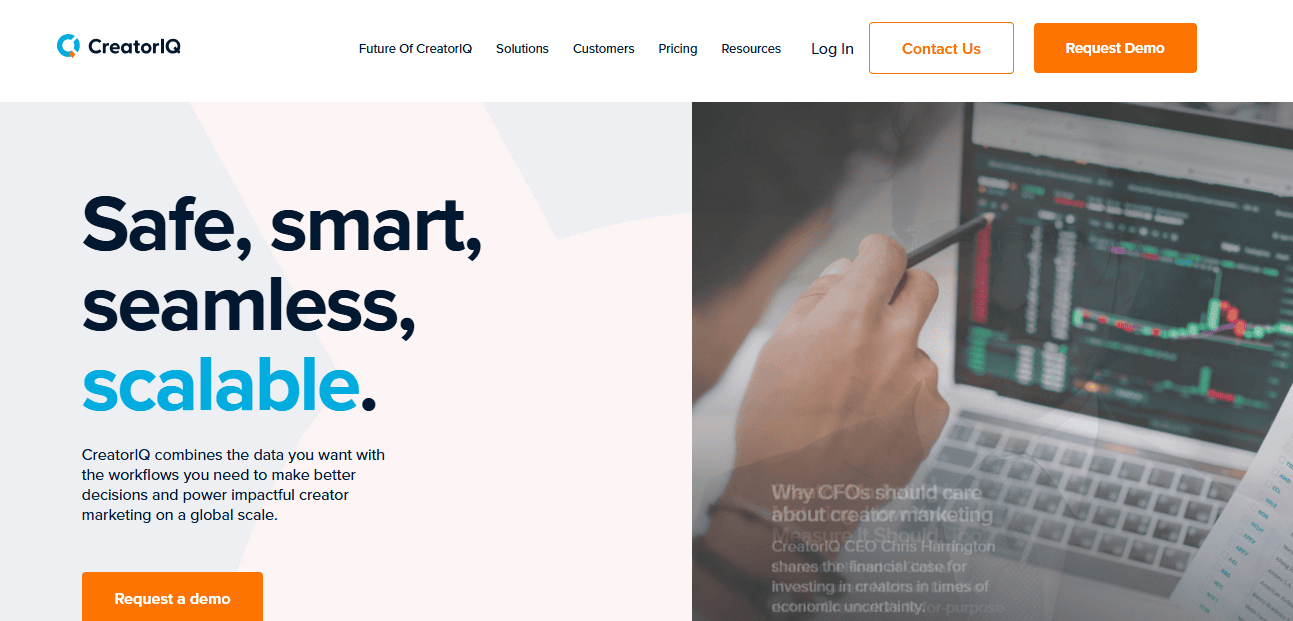
Platform Coverage: Instagram, TikTok, YouTube, Facebook, Pinterest, Twitch, X.
Best For: Large enterprises and global brands looking for an end-to-end influencer marketing platform with advanced analytics, API-backed data, and scalable campaign management. It’s particularly strong for teams managing high-volume collaborations across multiple platforms.
Pricing:
Reviews: 4.6 / 5.0 (G2)
Ease of Use (UX/UI): Users say the platform is feature-rich with customizable dashboards and reporting, but the complexity can be overwhelming at first. Once onboarded, the workflows and campaign tools are smooth and intuitive.
Customer Support: CreatorIQ is praised for its dedicated implementation managers and customer success teams who provide onboarding, strategy, and ongoing support. Some users note that while the support is highly professional, the reliance on annual contracts can feel limiting.
Influencer Searcher is designed for smaller eCommerce and DTC brands that want a simple and affordable way to discover and contact influencers, especially on Instagram. With pricing starting at $20/month, it appeals to teams that don’t require advanced reporting or integrations and simply need influencer discovery and outreach at scale.
CreatorIQ, by contrast, is a premium enterprise platform with pricing starting at $35,000 annually, aimed at large companies managing thousands of influencers across multiple platforms. It provides real-time API data, custom analytics, built-in compliance, and robust customer support. While Influencer Searcher is the cost-effective choice for startups and growing businesses, CreatorIQ is the stronger solution for enterprises needing scalability, global data accuracy, and a strategic partner in influencer marketing.
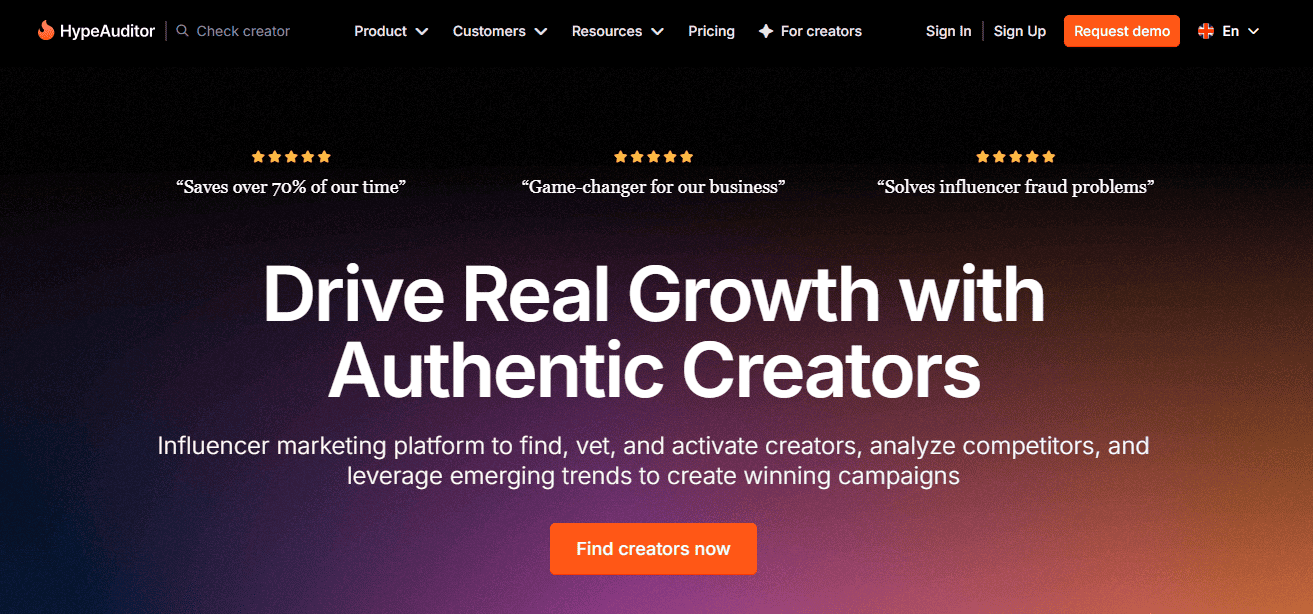
Platform Coverage: Instagram, TikTok, YouTube, Twitch, X (Twitter), Snapchat
Best For: Brands and agencies that want a data-driven approach to influencer marketing, with strong discovery tools, fraud detection, and customizable campaign tracking. It’s particularly valuable for those seeking transparency and ROI-focused influencer campaigns.
Pricing: Custom plans based on usage. Flexible contract terms depending on platform access, campaign volume, and number of reports.
Reviews: 4.5 / 5.0 (G2)
Ease of Use (UX/UI): Users report that the platform is powerful but can feel overwhelming at first due to its many features. Once familiar, the dashboard and reporting tools are considered intuitive and efficient
Customer Support: HypeAuditor provides onboarding assistance and responsive support for setup and campaign management. Some users note that advanced users may find support less proactive with more complex requests.
Influencer Searcher appeals to smaller brands and startups looking for quick influencer discovery at low cost, with pricing starting as low as $20/month. It’s straightforward, easy to adopt, and designed primarily for Instagram discovery and outreach without complex campaign management. HypeAuditor, however, is positioned as a premium solution with pricing starting at $10,000/year, offering robust analytics, fraud detection, and deep reporting across Instagram, TikTok, YouTube, Twitch, X, and Snapchat.
While Influencer Searcher works best for lean budgets and simple workflows, HypeAuditor is the stronger choice for data-driven teams that want advanced fraud prevention, ROI tracking, and scalable influencer management with e-commerce integrations.
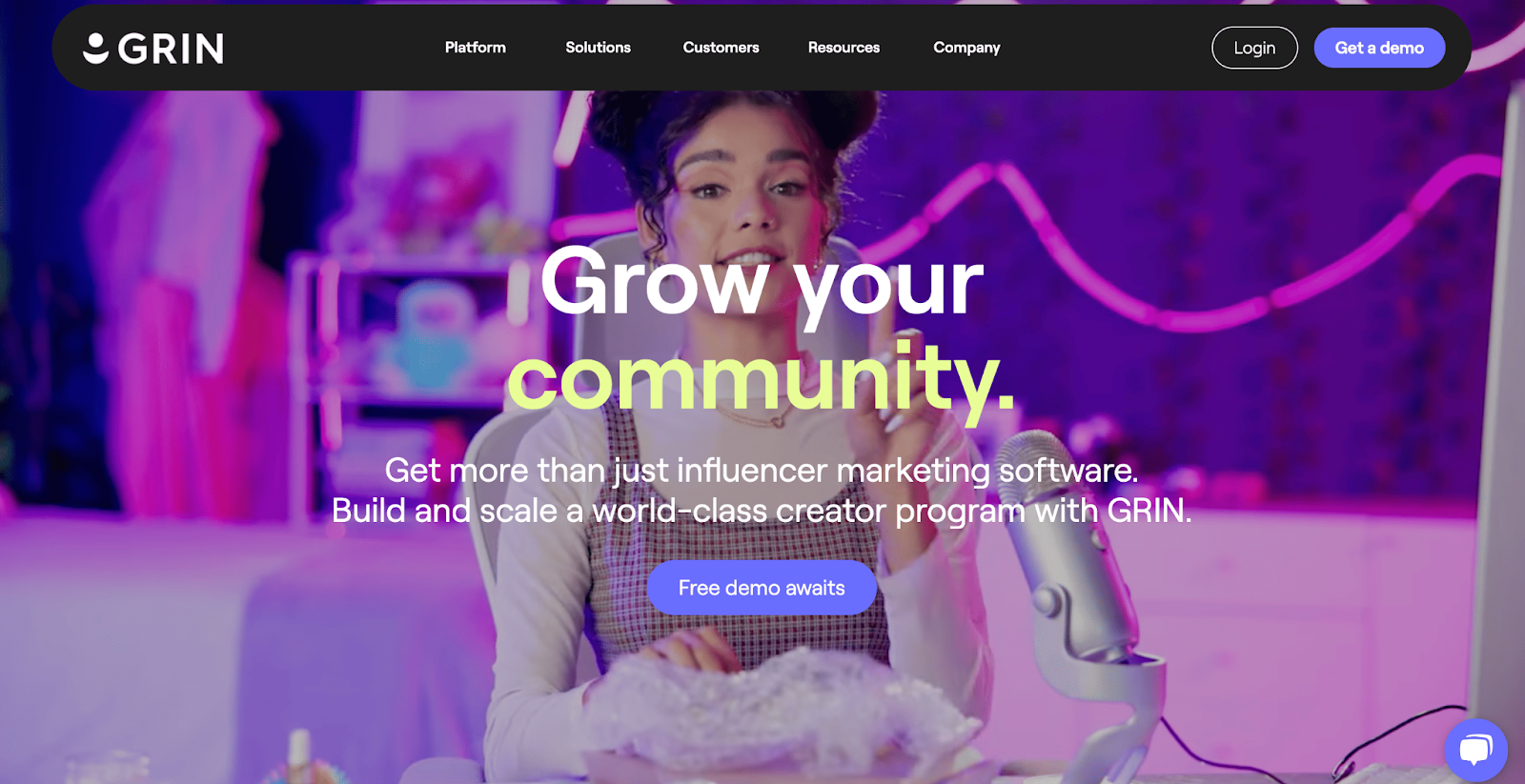
Platform Coverage: Instagram, TikTok, YouTube, X, Twitch, Snapchat
Best For: eCommerce and DTC brands that want to run end-to-end influencer programs with seamless product gifting, affiliate tracking, and integrated payments. It’s especially valuable for brands on Shopify, WooCommerce, or Magento looking to tie influencer campaigns directly to sales ROI.
Pricing: Plans start at $25,000 per year, with monthly payments available and a required 12-month commitment; typical monthly costs range from $2,500 to over $10,000 depending on usage, though pricing transparency may vary based on selected features.
Reviews: 4.5 / 5.0 (G2)
Ease of Use (UX/UI): Users say GRIN’s interface is intuitive once set up, with centralized workflows that reduce the need for multiple tools. However, some note occasional bugs, glitches, and slow loading that can disrupt the experience.
Customer Support: Customer support is generally helpful, with onboarding assistance and access to program strategists. That said, some users report inconsistent follow-through and delays in resolving technical issues.
Influencer Searcher is tailored to small and mid-sized businesses that need affordable influencer discovery and outreach, with plans starting at $20/month. Its main strength lies in simplicity and accessibility, focusing on Instagram discovery and email outreach without the complexity of eCommerce integrations or full-scale campaign tracking.
GRIN, by contrast, is a premium platform starting at around $25K/year, designed for brands that want to deeply integrate influencer marketing into their eCommerce operations. With features like automated gifting, ROI tracking, and in-app payments, it provides an end-to-end solution that ties influencer campaigns directly to sales.
While Influencer Searcher is ideal for lean teams and budgets, GRIN is the stronger choice for established eCommerce brands that need scalability, robust integrations, and measurable ROI.
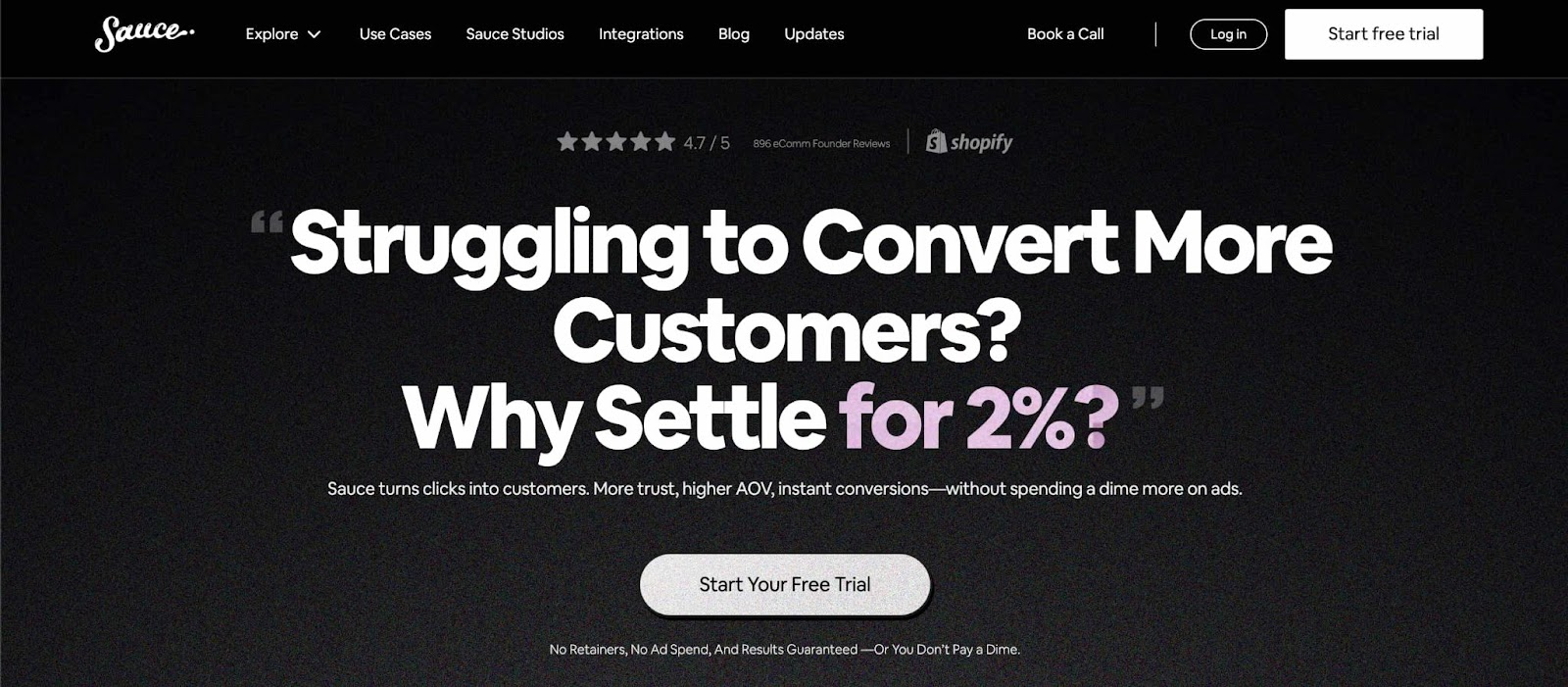
Platform Coverage: Integrates with Instagram and TikTok
Best For: eCommerce brands that want to transform influencer content and UGC into shoppable media experiences. It’s particularly effective for Shopify and DTC businesses that prioritize social commerce and visual selling to drive conversions.
Pricing:
Free 7-day trial available on all plans.
Reviews: 4.6 / 5.0 (Shopify App Store)
Discover how to broaden your influencer toolkit by exploring the top 10 Sauce alternatives that balance social commerce and marketing ROI.
Ease of Use (UX/UI): Merchants highlight the platform’s zero-code setup and quick implementation, making it easy to embed galleries and video commerce without developer support. The interface is highly visual and designed for seamless integration across web, social, and email.
Customer Support: AddSauce offers live chat, onboarding guidance, and responsive support, with many users praising their merchant-first approach. Reviews consistently mention fast replies and clear communication.
Influencer Searcher is built for small to mid-sized businesses that need affordable influencer discovery and outreach, with pricing starting as low as $20/month. It emphasizes simplicity, focusing mainly on Instagram searches and campaign organization without complex eCommerce or social commerce features.
AddSauce, on the other hand, is a social commerce-first platform, starting at $50/month and scaling to enterprise tiers over $2,000/month. Instead of just helping brands find influencers, it focuses on turning UGC and influencer content into shoppable experiences across websites, social, and email. While Influencer Searcher is best for budget-conscious teams looking to expand influencer lists, AddSauce is ideal for eCommerce brands that want to maximize ROI by making influencer collaborations directly shoppable and measurable.
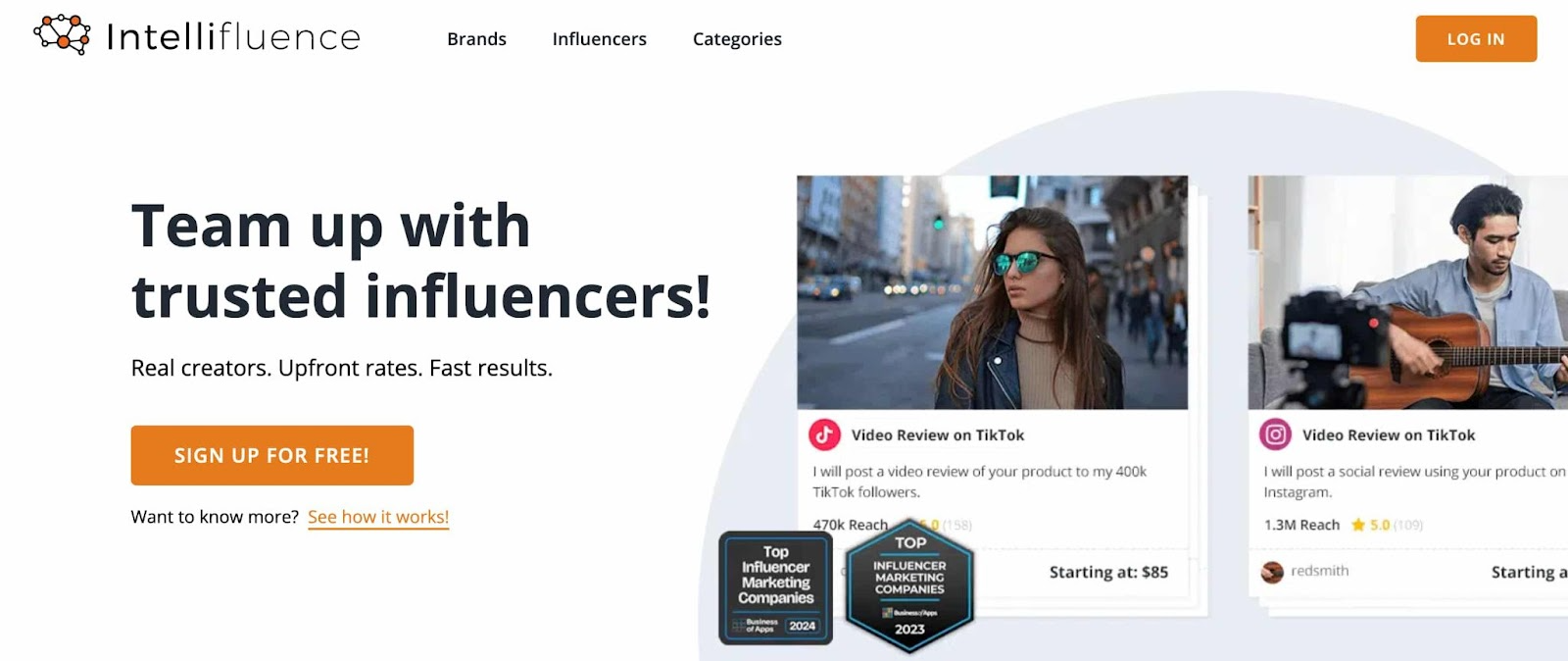
Platform Coverage: Instagram, Facebook, TikTok, YouTube, LinkedIn, Pinterest, Twitch, Reddit, X, SoundCloud, blogs, podcasts, and even marketplace reviews (iOS, Google Play, Amazon).
Best For: Small to medium-sized brands that want a flexible, affordable way to run influencer campaigns without long-term commitments. It’s particularly useful for businesses looking to collaborate with micro- and nano-influencers across multiple platforms, generate UGC, and manage campaigns end-to-end.
Pricing:
Note: A 10% transaction fee applies to cash payments processed through the platform.
Reviews: 0.0 / 5.0 (G2)
Ease of Use (UX/UI): Users describe Intellifluence as intuitive, with a clean dashboard and easy-to-follow workflows for discovery, communication, and campaign management. However, some mention occasional bugs and a less polished mobile experience compared to desktop.
Customer Support: The support team is praised for being responsive and helpful, especially for new users setting up their first campaigns. That said, some users report that campaign approvals and dispute resolutions can take longer than expected.
Influencer Searcher focuses on affordability and simplicity, with plans starting at $20/month and a clear emphasis on Instagram discovery and outreach. It is ideal for startups and smaller teams that just need basic search, grouping, and outreach capabilities without complex workflows. Intellifluence, on the other hand, offers broader platform coverage and a large opt-in influencer network, with pricing starting at $99/month. It also adds flexibility with transparent offers, built-in payments, and the option for managed services.
While Influencer Searcher is the cheaper option for brands with minimal budgets, Intellifluence provides greater scalability, platform diversity, and campaign security, making it a stronger choice for businesses that want to expand their influencer efforts beyond Instagram.

Platform Coverage: Shopify, Salesforce, Adobe Commerce, WooCommerce, HubSpot, Zapier, and other major marketing and eCommerce platforms.
Best For: Brands that want to turn their existing customers, creators, and influencers into authentic brand advocates. It’s particularly useful for eCommerce businesses that want to integrate influencer and UGC content directly into product pages, emails, and campaigns to boost trust and conversions.
Pricing: Pricing is not publicly disclosed. TrueLoyal operates on a custom pricing model tailored to brand size and needs, with demos required for a detailed proposal.
Reviews: 4.8 / 5.0 (Capterra)
Ease of Use (UX/UI): Users find the platform straightforward, with workflows that consolidate influencer, creator, and customer content into one centralized space. The visual tagging and organization features make it easy to manage briefs, rights, and publishing across channels.
Customer Support: TrueLoyal provides onboarding and strategic support to help brands activate creator and customer content effectively. Some users note that because pricing and plans are custom, support tends to be hands-on and tailored to brand needs.
Explore how to deepen your influencer strategy by comparing the top 10 TrueLoyal alternatives through feature sets and pricing insights.
Influencer Searcher is designed for affordability and quick influencer discovery, with pricing starting at $20/month. It primarily focuses on Instagram search, outreach, and campaign grouping, making it a good option for smaller brands or those just beginning with influencer marketing.
TrueLoyal, by contrast, is a custom-priced solution built for brands that want to merge influencer, creator, and customer content into authentic advocacy. Rather than focusing on broad influencer discovery, it helps brands identify existing fans, secure content rights, and display curated content across product pages and campaigns. While Influencer Searcher is a good entry-level tool for expanding influencer lists, TrueLoyal is a stronger choice for brands seeking to maximize ROI by embedding authentic influencer and UGC content into their customer journey.
When weighing alternatives to Influencer Searcher, it’s clear that brands today need more than basic influencer discovery. While it remains an affordable entry point for small teams focused on Instagram, its limited features, lack of verified reviews, and weaker customer support make it less competitive for brands aiming to scale influencer programs with measurable ROI.
Among all the options, Influencer Hero emerges as one of the best alternatives thanks to its all-in-one solution that combines discovery, outreach, CRM, affiliate tracking, UGC, and eCommerce integrations. With multi-platform coverage, automation-driven workflows, and premium customer support, it delivers both scalability and efficiency for growing brands.
Book a demo with Influencer Hero and see how it can transform your influencer marketing campaigns today!

Because Influencer Searcher mainly focuses on Instagram discovery and lacks advanced features. Tools like Influencer Hero, Modash, and Upfluence offer stronger analytics, campaign management, and multi-platform support.
Influencer Hero is the top all-in-one choice, combining influencer discovery, outreach, CRM, UGC, affiliate tracking, and Shopify integration in one platform.
Influencer Searcher starts at $20/month. Other low-cost options include Intellifluence and AddSauce, though they offer fewer features than Influencer Hero
Influencer Hero, Modash, and Upfluence all integrate with Shopify. Influencer Hero stands out for combining gifting, storefronts, and affiliate payouts.
Influencer Searcher’s support is mixed. Influencer Hero offers 24/7 live chat, dedicated account managers, and onboarding, making it a stronger choice for growing teams.



Schedule a Demo with one of our media experts below.